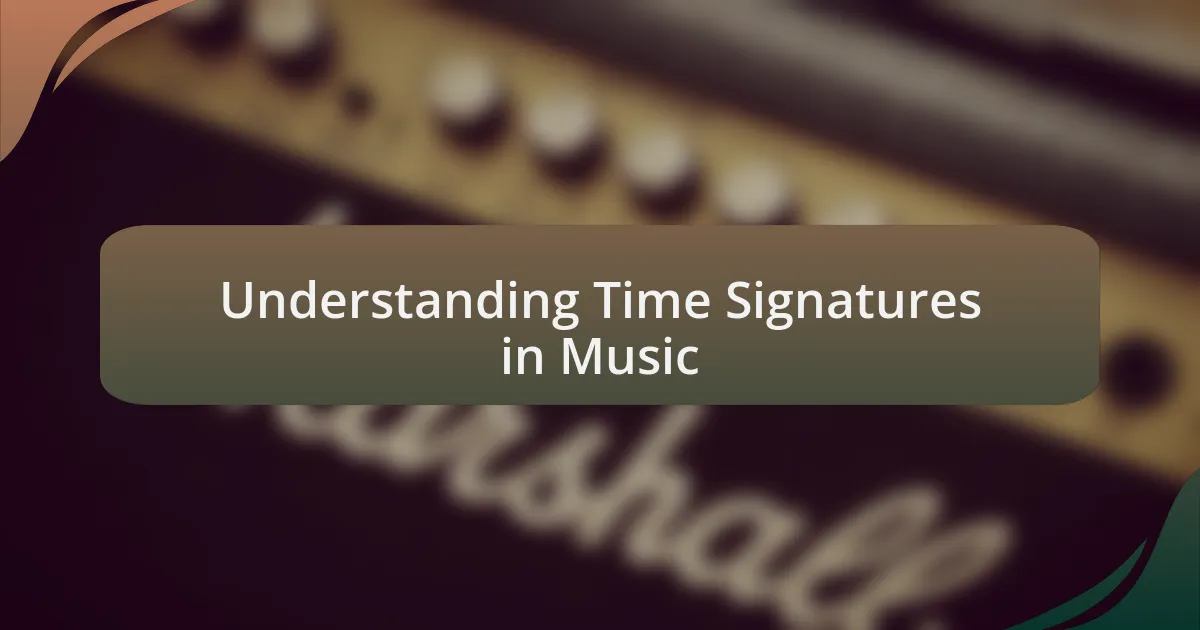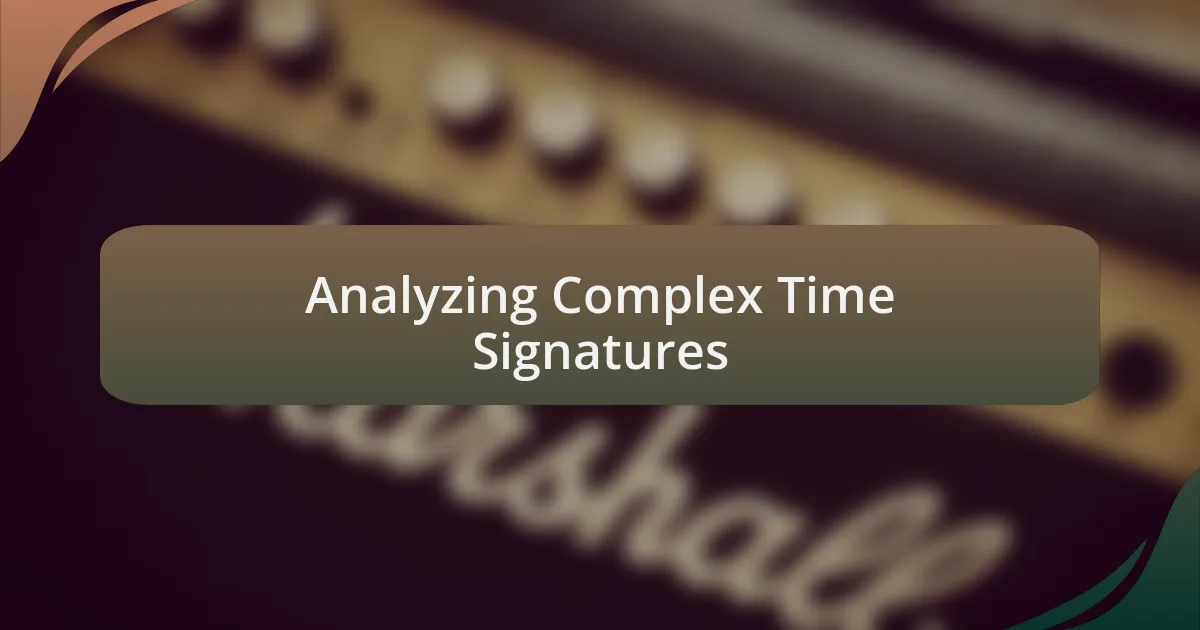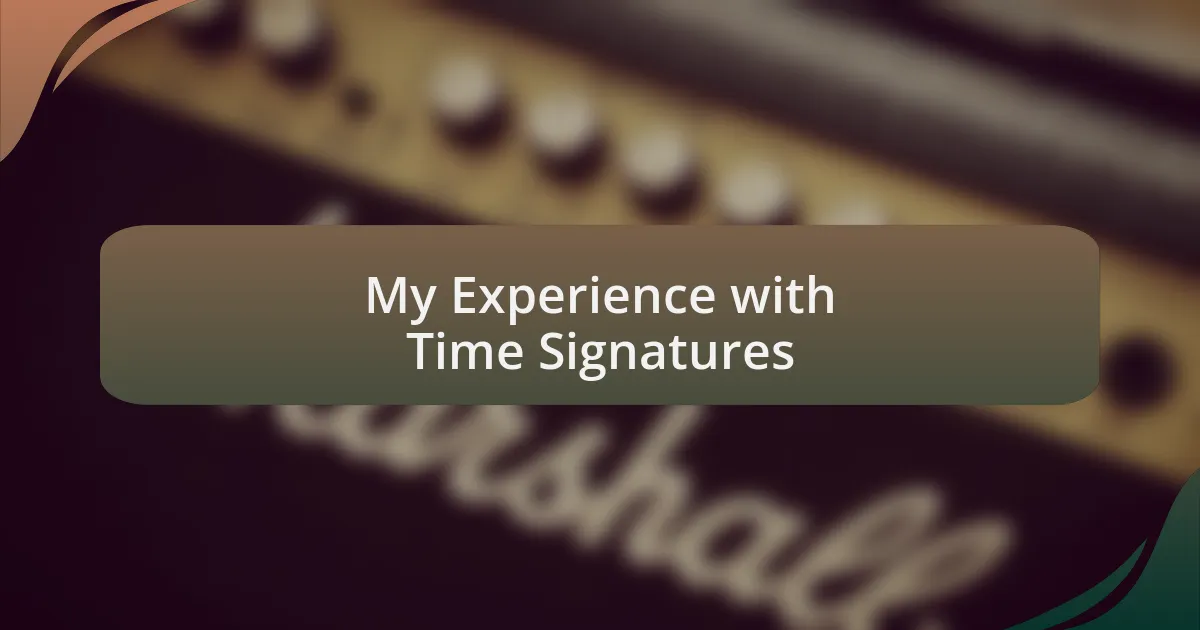Key takeaways:
- Time signatures, such as 4/4 and 3/4, significantly influence the structure and emotional impact of music.
- Exploring complex time signatures like 5/4, 7/8, and 9/8 enhances creativity and can transform the listening experience.
- Adapting to various time signatures challenges musicians and encourages deeper engagement with rhythm and structure.
- Time signatures are not just mathematical; they represent musical conversations that open doors to new creative possibilities.

Understanding Time Signatures in Music
Time signatures are fundamental in understanding how music is structured. For instance, when I first learned to read music, the concept of 4/4 time felt like stepping into a familiar rhythm, almost like a heartbeat. Have you ever tapped your foot along to a song? That consistent pattern is a perfect example of how time signatures guide us through musical compositions.
I remember the moment I discovered 3/4 time while playing a waltz. It was like a dance on the page, with each measure swaying elegantly. This time signature creates a unique flow that evokes feelings of grace and nostalgia, reminding me of cozy evenings spent at home with family. Don’t you think that different time signatures can profoundly impact the emotions conveyed in a piece?
Exploring less common time signatures, such as 5/4 or 7/8, has always intrigued me. These signatures challenge musicians to think outside the box and can create an unexpected tension in the music. Have you experienced the excitement of navigating unusual rhythms? It’s in these moments that the true beauty of musical diversity shines, showcasing how time signatures can shape not just a piece, but the entire listening experience.

Analyzing Complex Time Signatures
Analyzing complex time signatures can open up a whole new world of rhythmic exploration. I vividly recall my first encounter with 9/8 time while playing an Irish jig. The rapid triplets gave it a lively bounce that made me feel as though I was dancing with the notes. Such a signature can create a joyful energy, but it also requires a deeper understanding of how to break down the rhythmic patterns.
When I work with odd meters like 11/8, I often find myself counting and clapping out the beats to internalize the swing. There’s something challenging and thrilling about navigating through the shifting accents. Have you ever felt that rush when you finally get the hang of it? It’s a rewarding experience, transforming each measure into a puzzle that adds both complexity and richness to the music.
Delving into complex time signatures also challenges my perception of phrase lengths. Often, I’ve noticed how such signatures inspire creativity within musicians, allowing for a departure from traditional song structures. For example, a piece in 7/8 can make me rethink how I approach melodic development. How often do we consider the impact of such intricacies on our overall musical expression? It’s these distinctive signatures that remind me that music isn’t just about notes; it’s about the journey they take us on.

My Experience with Time Signatures
Throughout my musical journey, I’ve often faced the challenge of adapting to various time signatures, each bringing its own flavor. I remember the first time I tackled a waltz in 3/4—it felt like an invitation to sway gracefully with the music. The distinct emphasis on the first beat provided a backbone that made me appreciate how rhythm can dictate the mood of a piece.
One of my memorable experiences was performing a piece in 5/4. At first, it felt like learning to walk again; each measure was an unexpected twist. I found myself nodding to an unconventional beat, and the constant shift forced me to listen more intently, all while engaging my audience differently. Have you ever had a similar experience where the time signature transformed your approach to music? There’s a certain thrill in exploring these odd rhythms that pushes you to be more versatile as a musician.
As I continue to explore time signatures, I realize they are not just mathematical concepts; they are musical conversations. Playing in 6/8, for instance, allowed me to embrace a flowing, lyrical quality that I hadn’t experienced before. It made me reflect on how we can let our creativity soar when we step outside of the familiar. Don’t you find that every new time signature is like a door to a room of endless possibilities waiting to be discovered?